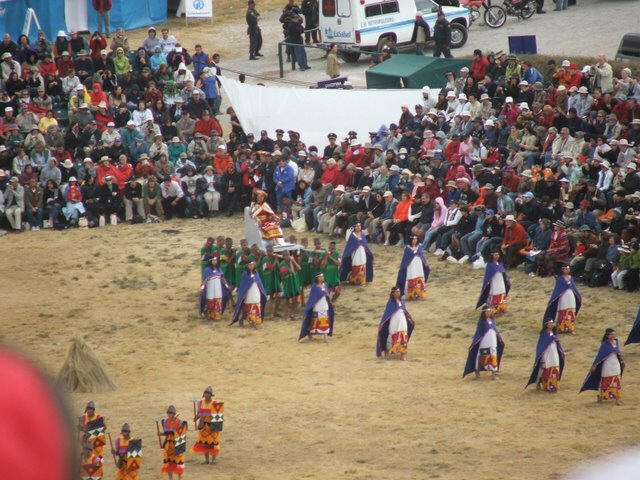This site is for information purpose only. MachuPicchu-Inca.com does not offer any Tour or Packages.
Inti Raymi was actually the month of June in Inca language. During this month Inca enjoyed the festival of the Sun - the most important Inca ceremony. The people believed that the Sun was holding the celebration and that the nobility were his guests at the festival. The emperor himself presided over this ceremony, and every nobleman, dressed in his best and displaying all the ornaments he possessed, came to Cusco for it.
On June Sun goes farthest from earth. Inca believed that if they failed to please the Sun, it would go further and world would become cold and there would be no crops. So in an effort to please Sun, the Inti, they arranged this festival to please Inti and save the world.
On this day Sapa Inca started the procession from Coricancha at Cusco. The procession continued to Sacsayhuaman. The procession was really colorful. Roads were bedded with flowers. The roads to Sacsayhuaman were swept and cleaned from evil spirits. People danced and music with drums were played all the way. Once the procession reached Sacsayhuaman, where a huge crowd would be waiting, the Sapa Inca climbed to the Golden Temple and could be seen from below.
At the end of the ceremony, respectable priests pronounced blessing for the people. The the procession would be back to Cusco, where Sapa Inca and Mama Occla remain seated on their golden throne throughout the journey.
During those days the festival of Sun lasted for nine days. On the fourth morning all the Inca came to the stretching their arms in front of their faces and made kissing noises as a greeting to the Sun.
After that Llamas and Alpacas were sacrificed and then the emperor stood up, holding tow golden goblets filled with chicha. The goblet in his right hand he offered to Inti, the sun, and it was poured to a gold jar which was connected by tubes into the Temple, giving the impression that the Sun was drinking it.
The emperor drank for the goblet in his other hand. He actually did not drank, rather just took a sip of the chicha and then handed the goblet down for the nobles to sip and pass around among themselves. This royal gesture of friendship of drinking with his noblemen as equals, meant a great deal to every nobleman present. Not for another year would any of them share a drink with their emperor.
Inti Raymi has become one of the most popular festival in South America recently. It's the second biggest celebration in South America now ( Rio's carnival being the first). The festival attracts hundreds of thousands of visitors from all over the world. Certainly there is no Sapa Inca now. But the role of Sapa Inca and Mama Occla is played by famous artists of Peru.

The Priest is carried toward the alter
The main show takes place in Sacsayhuaman in presence of a huge crowd. The procession from Cusco to Sacsayhuaman is really colorful and interesting. Inti Raymi festival is a day long event. Most of the visitors stay in Sacsayhuaman fort, where it continues for at least five hours. In recent years a number of celebrities visited Peru during this festival, among them some are Cameron Diaz and Bill Gates.





